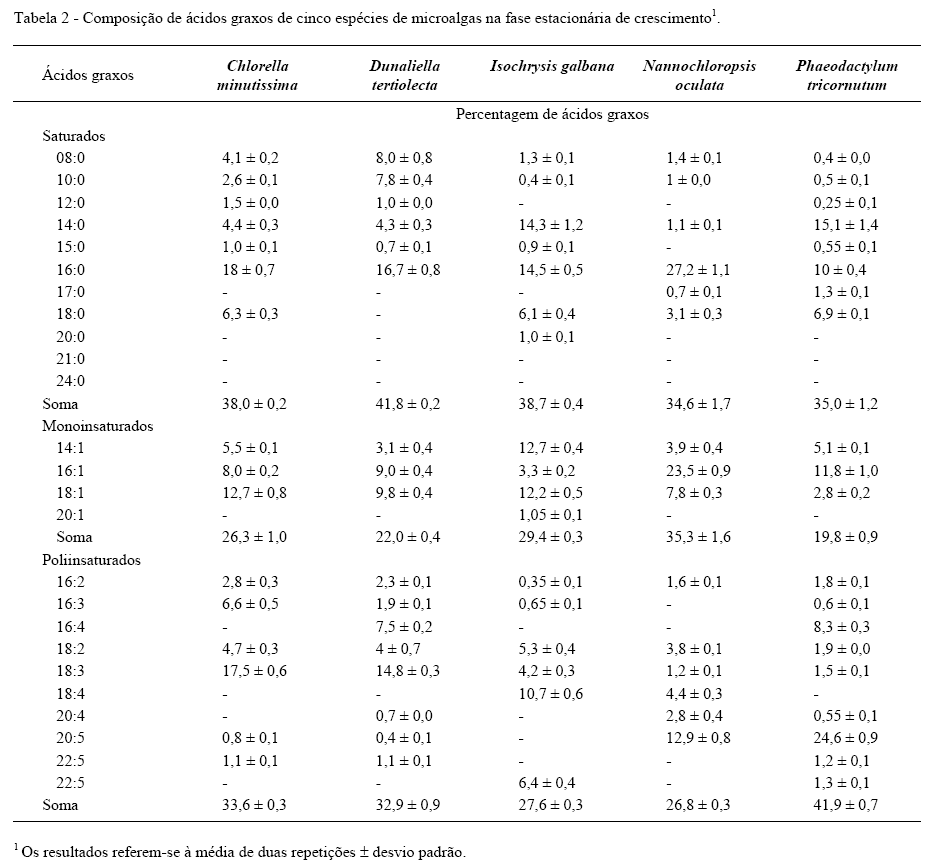Microalgae show several economic applications, such as uses in aquaculture and in food industry, and there is a search for new uses, such as the biomass production to convert into biodiesel. All possible applications are directly linked to growth rate and the chemical profile of the species. Thus, the selection of conditions to promote a better use of algal biomass is fundamental for economic purposes. In this study, 10 species of marine microalgae were cultured and compared for growth and chemical composition. Remarkable differences of growth performance have been observed, with species with small cell volumes growing faster than species with large cell volumes. Levels of protein, carbohydrate, lipid and photosynthetic pigments varied widely, and proteins were identified as the most abundant substances. Some species showed high concentrations of fatty acids of economic importance, such as eicosapentaenoic and linoleic acids. The concentrations of amino acids were similar among species. In all microalgae, glutamic and aspartic acids were the most abundant amino acids. An overall evaluation of the results indicates that few general trends related to the taxonomy of algal groups were recognized.
microalgae; culture; growth; chemical composition






